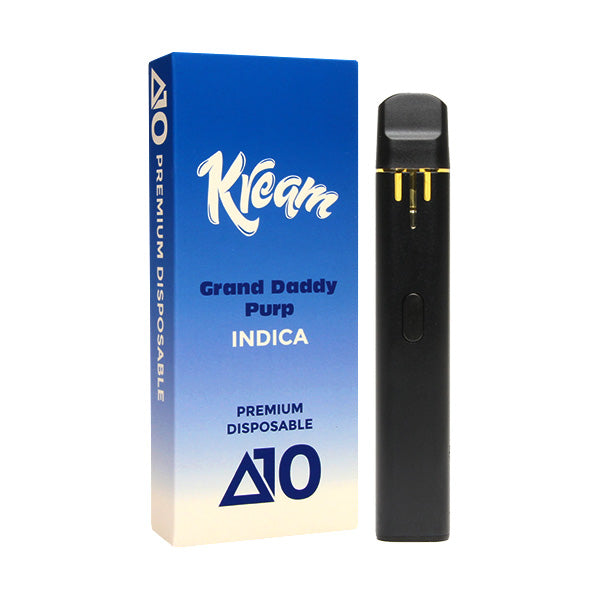Kream Disposable Vape Instruments: Redefining On-the-Go Vaping snappy and Taste
Kream Disposable Vape Instruments: Redefining On-the-Go Vaping snappy and Taste
Blog Article
Discovering the Environmental Influence of Non Reusable Vape Pens: What You Need to Know
In the world of disposable vape pens, a more detailed assessment of their environmental effect exposes a complicated internet of interconnected elements that warrant our interest. From the manufacturing procedures and materials utilized to their eventual disposal and influence on air high quality, the ramifications of these seemingly practical devices prolong far beyond their prompt use. Recognizing the full range of their ecological impact is essential for making educated decisions regarding our intake routines and the possible alternatives readily available.
Manufacturing Procedures and Materials
Non reusable vape pens are typically produced making use of a variety of products and procedures that can have significant environmental implications. The major components of disposable vape pens consist of a battery, burner, e-liquid tank, and a mouth piece. The battery is often made from lithium, a non-renewable source that calls for considerable power to remove and process. The e-liquid tank is frequently constructed from plastic, including in the environmental concern because of its non-biodegradable nature. The burner, usually made of metal alloys, likewise adds to the ecological influence via the removal and handling of basic materials.
Furthermore, the manufacturing processes involved in producing non reusable vape pens can further aggravate their ecological footprint. The use of plastics, metals, and chemicals in the manufacturing procedure causes greenhouse gas exhausts, energy usage, and waste generation. Additionally, the transportation of raw materials and finished items includes in the general carbon footprint of disposable vape pens. Taking into consideration these variables, it is crucial for consumers and producers to be mindful of the ecological effects connected with the manufacturing and usage of disposable vape pens.
Energy Intake in Manufacturing
During the manufacturing procedure of non reusable vape pens, the energy intake included plays a significant duty in determining their total environmental effect. The manufacturing of disposable vape pens calls for energy for numerous stages, consisting of extraction and processing of raw products, producing components like batteries and burner, setting up, transportation, and packaging. The extraction and handling of products such as chemicals, metals, and plastics require substantial energy inputs, adding to the overall carbon footprint of the product. In addition, the production procedures associated with creating the complex parts of vape pens, such as batteries and electronic circuitry, depend greatly on energy-intensive treatments.
To resolve the ecological effects of power intake in production, suppliers can take on much more sustainable practices. This can include utilizing renewable resource resources for making procedures, enhancing production processes to reduce energy waste, and executing energy-efficient innovations. By prioritizing power performance and sustainability in manufacturing, the environmental impact of non reusable vape pens can be decreased, adding to a greener and more accountable vaping industry.
Disposal and Waste Management

Non reusable vape pens consist of components such as batteries, digital circuits, and plastic cases that can be hazardous otherwise taken care of appropriately (kream disposable). The lithium-ion batteries in vape pens, for instance, pose a considerable risk if they finish up in garbage dumps, as they can leakage dangerous materials right into the soil and water system
Recycling programs particularly made for electronic waste must be advertised to encourage individuals to reuse their non reusable vape pens responsibly. By improving disposal methods and waste monitoring strategies, the environmental effect of non reusable vape pens can be significantly decreased.
Effect on Air Top Quality
The view it presence of disposable vape pens adds to the deterioration of air high quality in city settings where their use prevails. They release hazardous compounds into the air when individuals utilize disposable vape pens. These gadgets give off unpredictable natural substances (VOCs) like formaldehyde, acetaldehyde, and acrolein, as well as ultrafine particles that can penetrate deep right into the lungs. These exhausts can respond with various other contaminants in the environment, forming additional contaminants that position risks to human health and the setting. kream disposable.
Furthermore, the disposal of vape pen batteries, which often have hefty metals like nickel, cobalt, this article and lithium, can result in air contamination if not managed effectively. Incorrect disposal methods, such as incineration or landfilling, can launch these hazardous metals right into the air, contributing to air contamination and potentially causing damage to human wellness.
To reduce the impact of disposable vape pens on air high quality, promoting recognition about correct disposal methods, urging recycling programs for vape pens and batteries, and informing customers about the ecological effects of these devices are crucial steps in minimizing their ecological footprint.
Alternatives and Sustainable Choices
Due to the ecological visite site impact presented by non reusable vape pens, exploring alternatives and sustainable selections is essential for minimizing eco-friendly injury. One sustainable option is to switch over to refillable vape pens that allow users to charge the gadget with e-liquid, dramatically reducing the amount of waste generated. These refillable pens typically have much longer life-spans, bring about less devices ending up in land fills. Additionally, choosing vape pens made from recyclable materials can even more reduce the environmental footprint. Makers are progressively using green alternatives, such as pens created from recycled steels or eco-friendly plastics.
In addition, some companies have actually begun carrying out take-back programs for made use of vape pens, where they gather and reuse the devices effectively. Encouraging liable disposal practices amongst customers can also add to mitigating the environmental influence associated with vape pens.
Final Thought
Finally, the environmental influence of disposable vape pens is considerable, with adverse effects on air top quality, energy usage in manufacturing, and waste management. It is vital for consumers to think about the sustainability of their options and go with alternatives that have a lower ecological impact. By making educated decisions and sustaining sustainable techniques, people can add to decreasing the ecological injury triggered by disposable vape pens.

Efficient disposal and efficient waste monitoring are essential elements to take into consideration when assessing the environmental effect of non reusable vape pens. By improving disposal practices and waste administration methods, the ecological impact of disposable vape pens can be substantially reduced.
In conclusion, the environmental effect of non reusable vape pens is considerable, with adverse results on air top quality, power consumption in production, and waste management.
Report this page